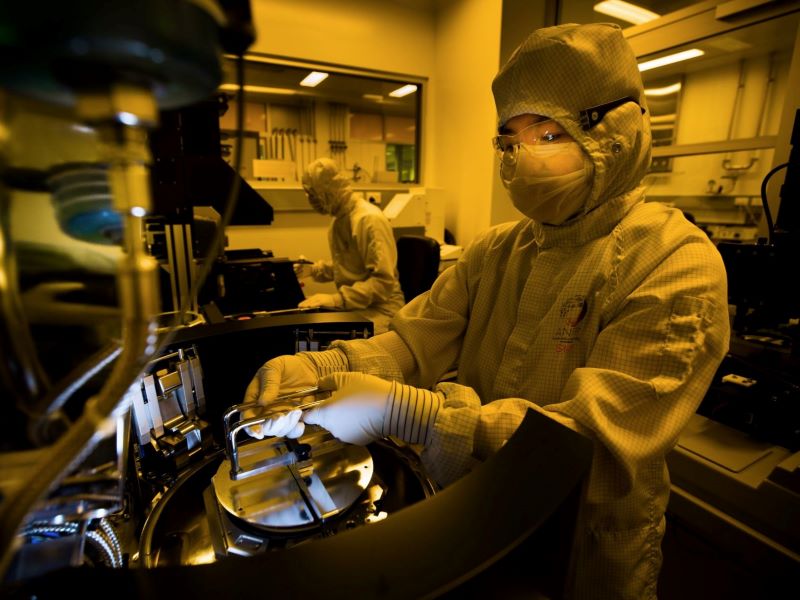Australia’s peak research bodies are ramping up pressure on the federal government to deliver on its commitment to push R&D expenditure towards three per cent of GDP.
Calls for greater R&D spending have been made in the pre-Budget submissions of the Australian Academy of Science (AAS), Science and Technology Australia (STA), Research Australia (RA), Universities Australia (UA), Cooperative Research Australia (CRA), the Australian Technology Network (ATN), and the Australian Academy of Technology and Engineering (ATSE).
Labor’s policy platform ahead of the 2022 election said it would work towards getting Australia’s investment in R&D “closer to three per cent of GDP”, which has been reiterated by Industry and Science minister Ed Husic.
The AAS is calling for the formal adoption of a national R&D expenditure target of three per cent of GDP, ATSE is calling for it to reach “an internationally competitive level”, and UA wants it to at least match the OECD average.

The STA calls for a “bold new direct investment in Australia’s R&D of significant scale” in the upcoming federal Budget to help push R&D expenditure closer to three per cent, which should include the establishment of a $20 billion Science Future Fund akin to the Medical Research Future Fund, as well as additional funding for the Australian Research Council and the National Health and Medical Research Council.
In order to reach the three per cent target, the ATN argues that “universities must be included in government plans”. Specifically, it calls for government action to “enable National Reconstruction Fund to invest in universities [and] bridge gaps in the research-commercialisation pipeline”.
R&D expenditure in Australia, according to 2020 figures, is 1.8 per cent of GDP, which is below the OECD average of 2.67 per cent of GDP. It is also well below world research leaders such as Germany, Japan, and the United States which all spend more than three per cent of GDP.
AAS president Professor Chennupati Jagadish increasing R&D expenditure would help create a knowledge-based economy, similar to other OECD countries, which have a greater dependence on knowledge, information, and high-skilled work.
“Australia should decide the skills and capabilities we need to build and the research strengths we need to sustain them,” he said.
“These recommendations will take time to implement, but are achievable, and we hope the upcoming budget helps to reposition Australian science to advance national prosperity and global competitiveness.”
Across all areas, the government has spent an average of 0.61 per cent of GDP on R&D since 2010-11, although expenditure has been below this average since 2015-16.
Research Australia has called for the government to “outline a substantially increased investment in national innovation in all areas and commit to increasing its spending on research and development to at least 0.75 per cent of GDP annually over the forward estimates”.
ATSE and the AAS are particularly in favour of an independent review of the nation’s research sector. The AAS argues that the research sector “currently operates on a 30-year-old system”. This was similarly called for in submissions to the review of the Australian Research Council.
Expenditure on R&D at government organisations has fallen, as a percentage of GDP, by about a third during the tenure of the previous Coalition government, from 0.24 percent of GDP in 2012-13 to 0.17 percent in 2020-21.
This mirrors the longer-term decline in government intramural R&D expenditure in almost every reporting period since the 1980s peak of more than 0.4 per cent. Meanwhile higher education and business expenditure on R&D have stagnated over the last decade.
Alongside its comparatively low R&D expenditure, Australia is also one of the least economically complex, currently ranked 91st in the world.
Other recommendations from AAS, RA and UA include more frequent “measurement of science and R&D in Australia to provide better data for policymaking and decision-making”, a National Medical Products Industry Plan “with the aim of Australia becoming a net exporter”, and extending the Higher Education Loan Program (HELP) to Australians undertaking non-award micro-credentials.
Last September, Prime Minister Anthony Albanese told a Committee for Economic Development of Australia conference that “government can’t be in the business of dictating breakthroughs or directing research, but it does have a vital responsibility to invest in our research agencies and universities and to support the field of smart and skilled Australians who will lead this work”.
Do you know more? Contact James Riley via Email.

